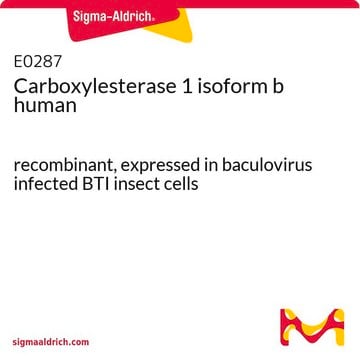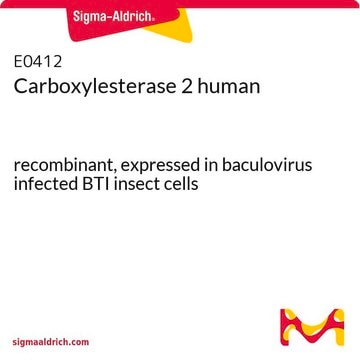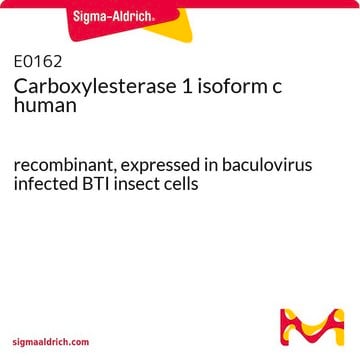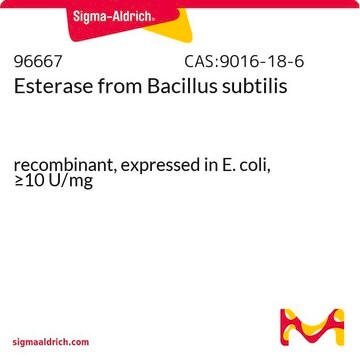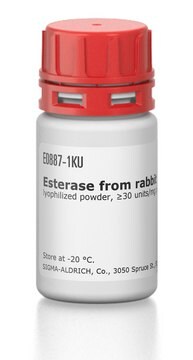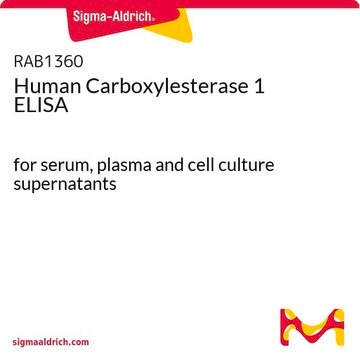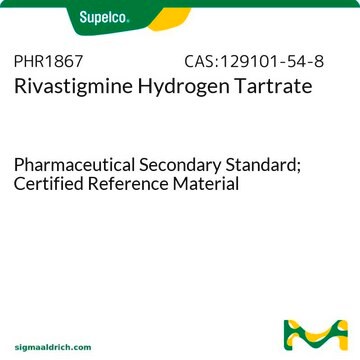C4749
Carboxylesterase 2 human
recombinant, expressed in mouse NSO cells, ≥95% (SDS-PAGE)
Synonym(s):
CES2, CES2A1
About This Item
Recommended Products
recombinant
expressed in mouse NSO cells
Quality Level
Assay
≥95% (SDS-PAGE)
form
solution
specific activity
≥1.0 EU/μg
30,000 pmol/min-μg protein
mol wt
predicted mol wt ~60 kDa
concentration
0.4-0.6 mg/mL
impurities
≤1.0 EU/μg endotoxin
shipped in
dry ice
storage temp.
−70°C
Gene Information
human ... CES2(8824)
Looking for similar products? Visit Product Comparison Guide
Biochem/physiol Actions
Unit Definition
Physical form
Signal Word
Danger
Hazard Statements
Precautionary Statements
Hazard Classifications
Resp. Sens. 1
Storage Class Code
10 - Combustible liquids
WGK
WGK 1
Flash Point(F)
Not applicable
Flash Point(C)
Not applicable
Certificates of Analysis (COA)
Search for Certificates of Analysis (COA) by entering the products Lot/Batch Number. Lot and Batch Numbers can be found on a product’s label following the words ‘Lot’ or ‘Batch’.
Already Own This Product?
Find documentation for the products that you have recently purchased in the Document Library.
Customers Also Viewed
Our team of scientists has experience in all areas of research including Life Science, Material Science, Chemical Synthesis, Chromatography, Analytical and many others.
Contact Technical Service